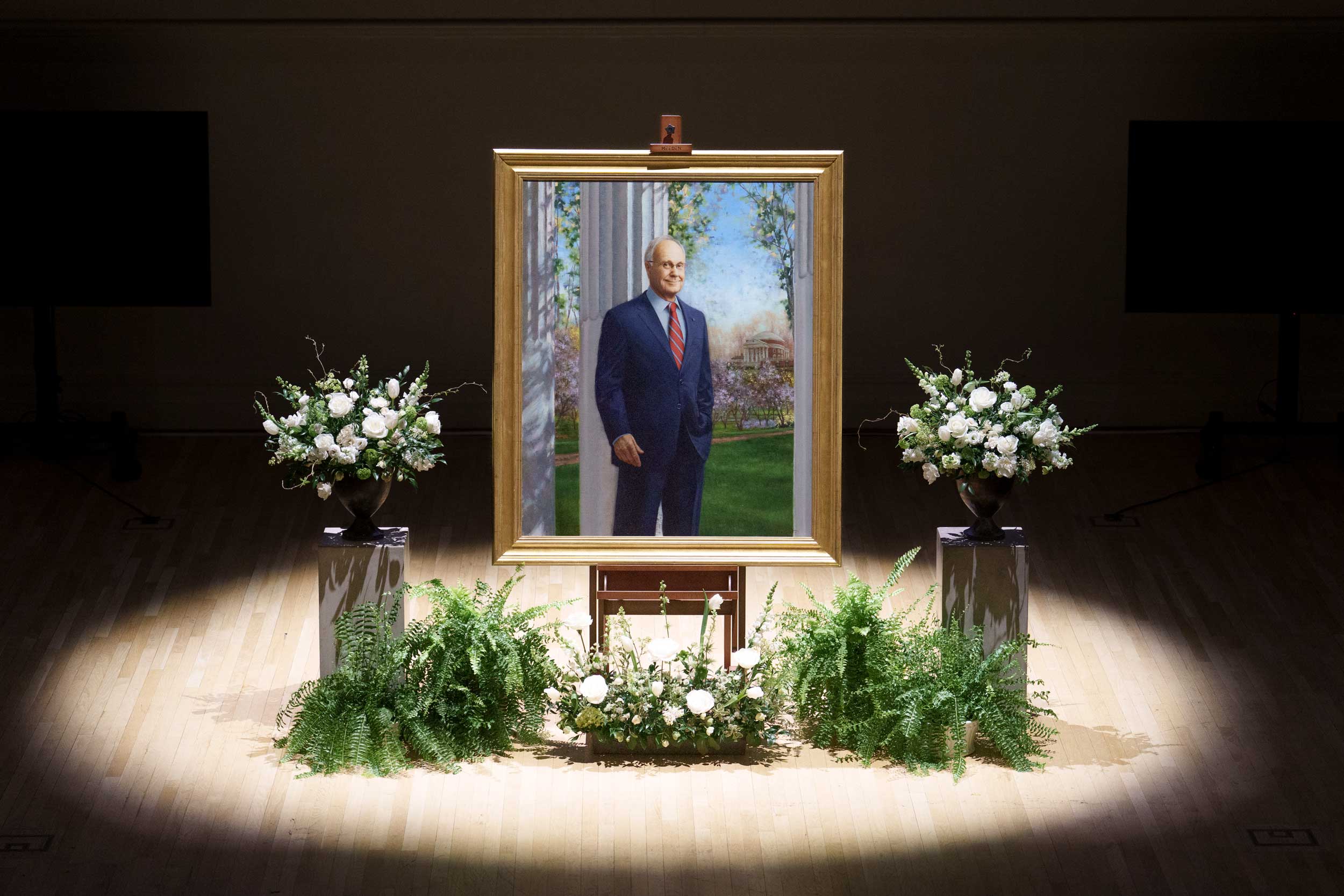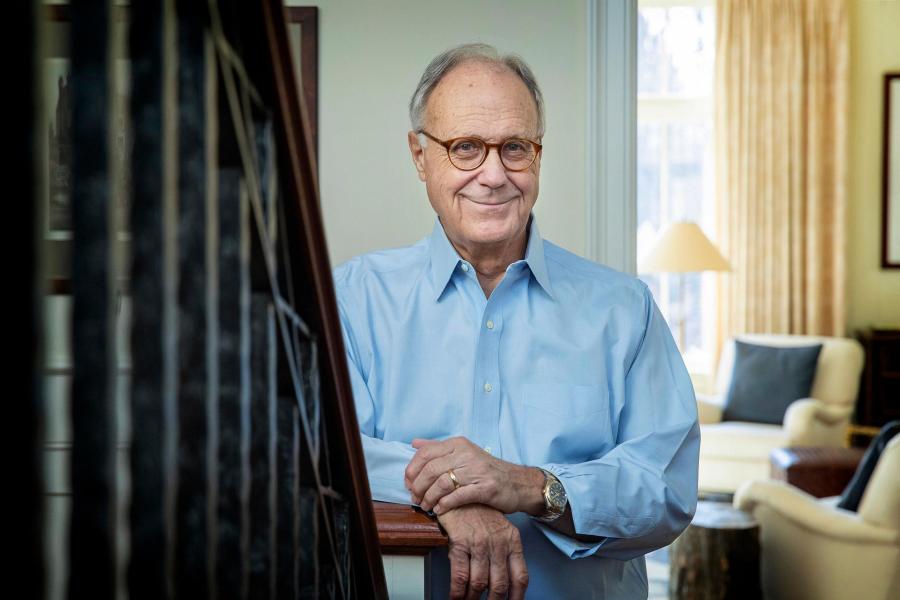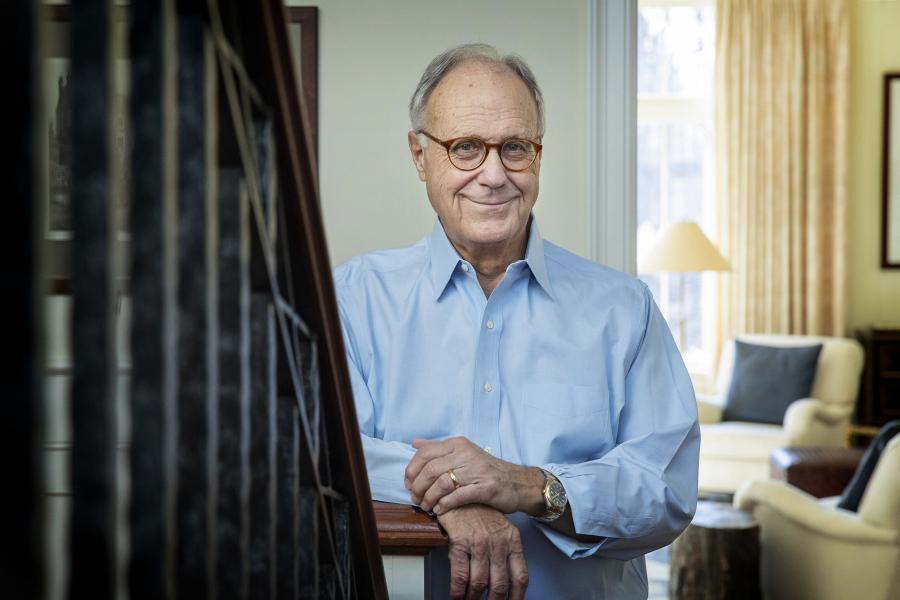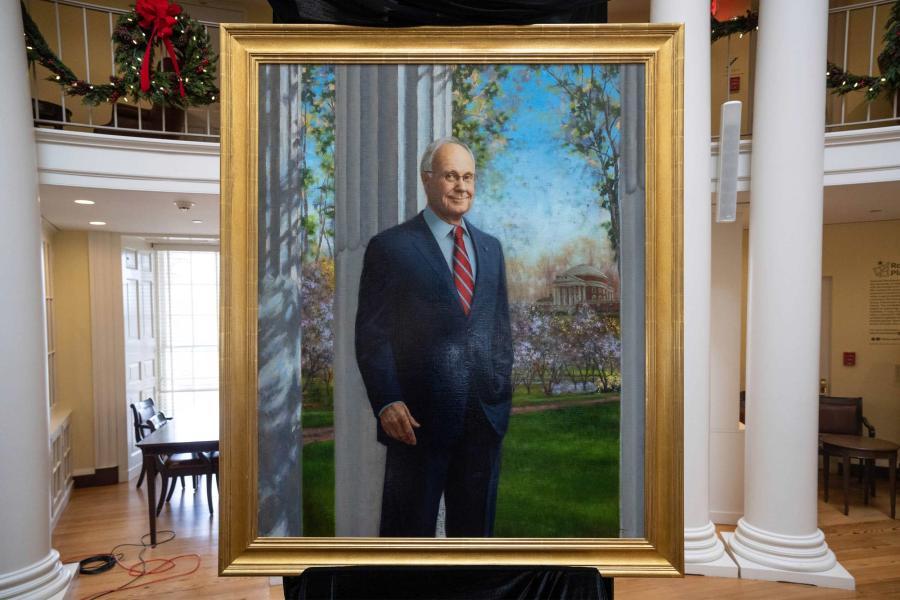John T. Casteen III’s imprint can be found all around the University of Virginia, from its Grounds and its finances to its diverse student body, said friends, family and University officials Tuesday during a memorial service honoring the late president emeritus.
The 81-year-old Casteen, who served two decades as the University of Virginia’s president, died March 18. He was honored at a service in Old Cabell Hall Auditorium.
Casteen, often called “the father of the modern University,” led efforts to expand the school’s footprint and course offerings, while launching a major endowment fund to strengthen the school’s finances.
Just as important to him was opening the University to as many people as possible, leading to his efforts to recruit female, Black and international students and faculty. That effort began before he took the president’s office, during his tenure as dean of admission from 1975 to 1982.
“The University needed to make room for all students who embodied the excellence to which it aspired,” said Casteen’s son, John T. Casteen IV, who delivered his father’s eulogy.
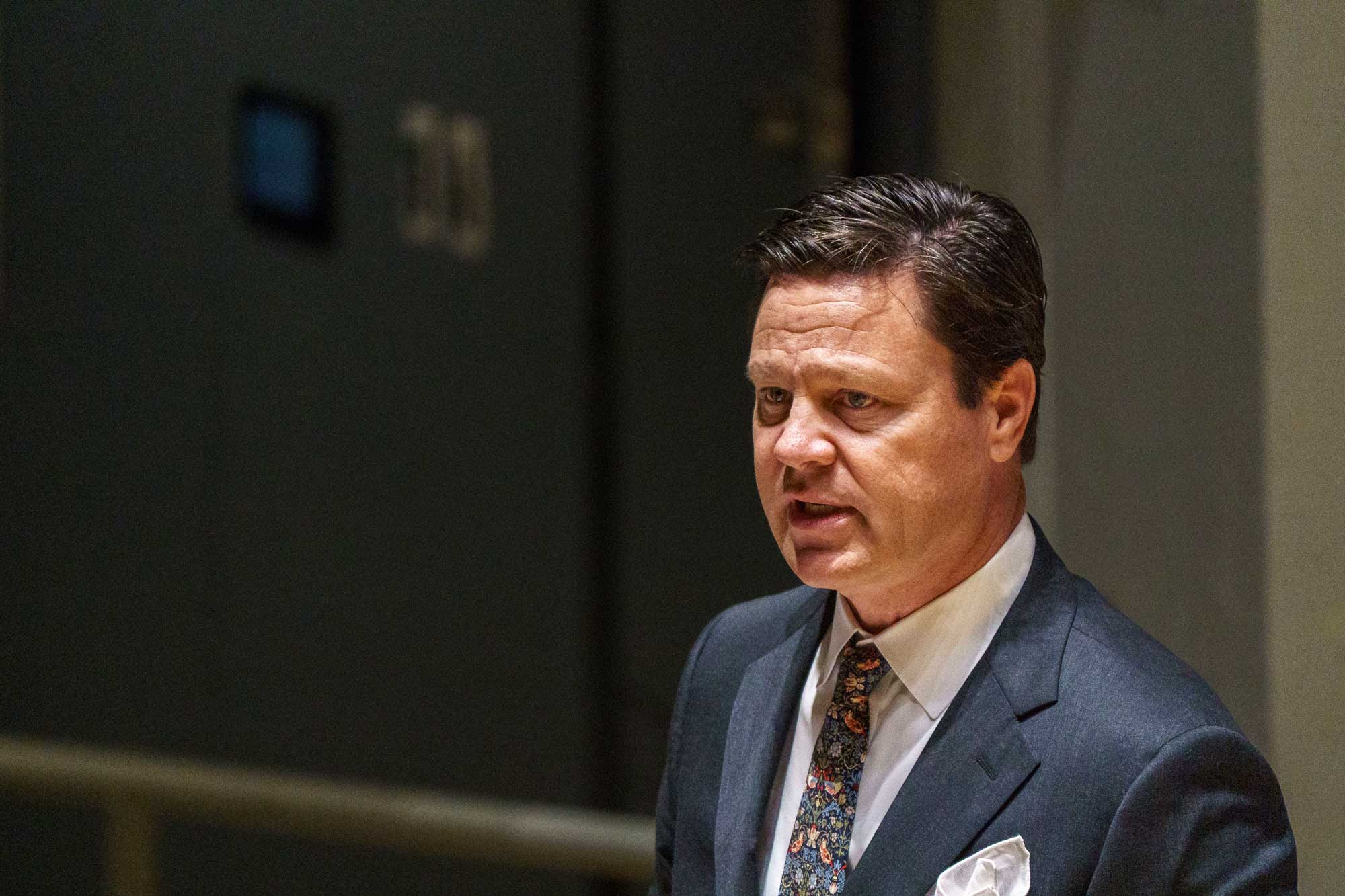
John T. Casteen IV speaks of his father’s commitment to expanding the diversity of the University’s student body, an endeavor he believes has made the school stronger. (Photo by Lathan Goumas, University Communications)
“Imagine for a moment that you had walked onto this campus, or most other college campuses in America, in 1961, when my dad matriculated. It would have seemed natural, obvious and ordinary – normal – that all of the students and the vast majority of the faculty were white and male,” he said. “It was University policy, standard operating procedure, accepted best practice and permissible under state law. It was simply the way things work.”
Casteen said the change his father fostered can be seen by walking around the Grounds.
“If you walk around this campus today, or any other, it seems totally obvious that all qualified people belong here, regardless of their race, class, gender, first language, religious identity, gender identity, sexual preference, geographic background, difference of ability or status as veterans,” Casteen said.
“It seems obvious that merit, not demography, earns a person the opportunity to study and learn,” he said. “If this feels normal to you, as it should, please recognize that that feeling came from the work of specific people whose consciences required them to assert that the old normal was unacceptable.”
Angela Davis, retired special assistant to the vice president and chief student affairs officer for UVA, said President Casteen convinced her to stay on Grounds.

Angela Davis, retired special assistant to the vice president and chief student affairs officer for UVA, recounts how Casteen convinced her to stay on Grounds. (Photo by Lathan Goumas, University Communications)
“John and I first met in 1975 as colleagues in the English department. At that time, I was the only black professor, and one of only two women. Sharon Davie was our other colleague,” Davis recalled in her remarks. “Having never lived in the South, or in a segregated environment, I experienced culture shock and wanted out of this ‘chilly climate.’ John, however, had other ideas about that.”
With Casteen’s help, Davis applied and was hired for a student affairs position, she said.
“John understood that it just wasn’t good enough to go to black churches to recruit black students and to open UVA’s door to women,” she said. “It also was just as critical to diversify our faculty and administrative leadership. And so, I stayed. UVA became a part of me.”
Elizabeth Fowler, an English professor, said she will always remember Casteen as a teacher. She told the gathering that, as Virginia Secretary of Education, Casteen still found time to teach, as he did when he was president of the University of Connecticut.
"And I am beyond grateful to be able to say that, after he stepped down from the (UVA) presidency, he taught eight years of courses in a crowning addendum to his service here," she said.
Fowler continued: "Our students filled the seats in his classroom every one of those years, learned so much, and raved so much about him."
Current UVA President Jim Ryan said he remembers Casteen for his efforts to reshape the University.
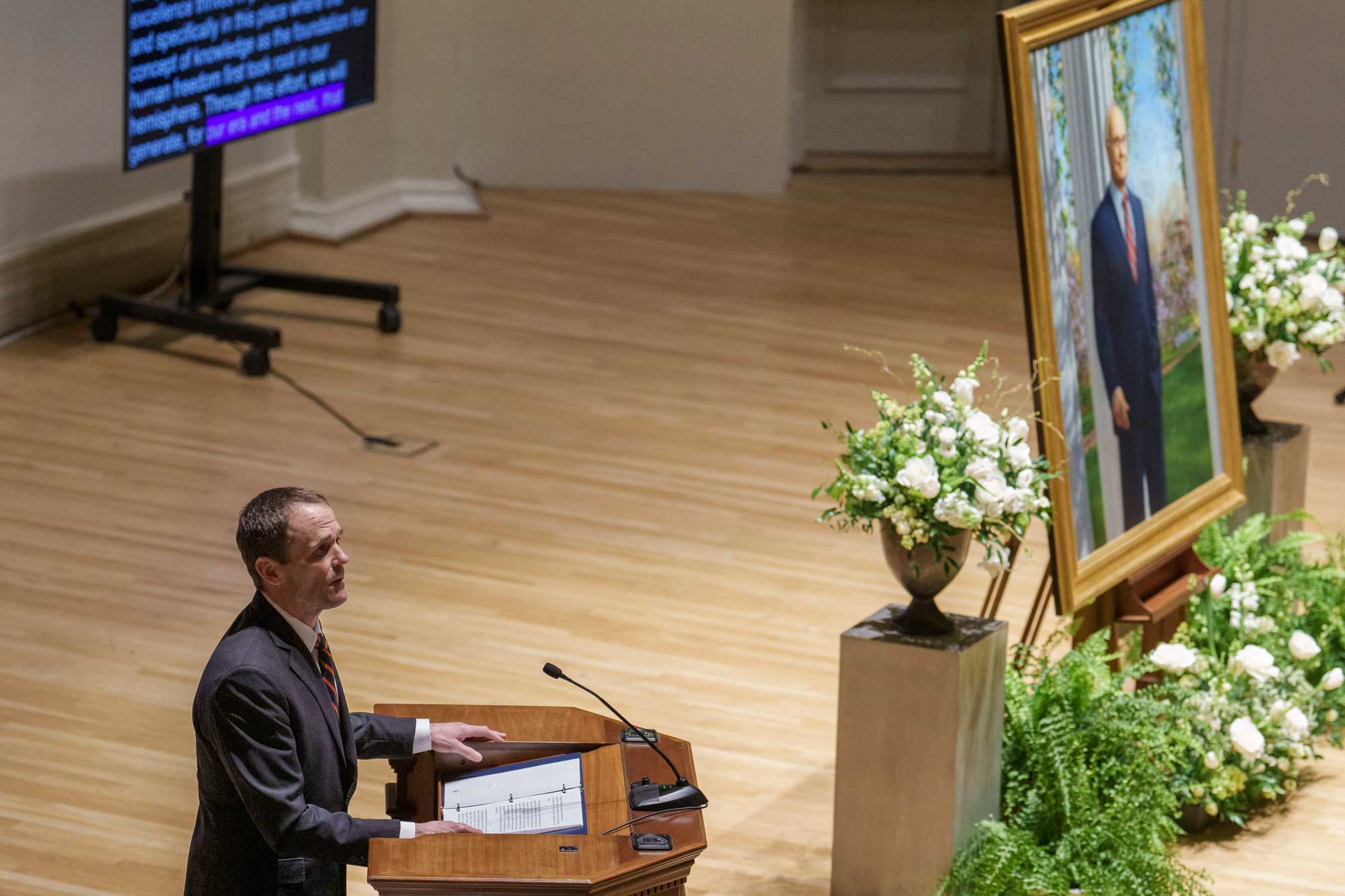
UVA President Jim Ryan speaks at the memorial service for President Emeritus John T. Casteen III. (Photo by Lathan Goumas, University Communications)
“At the start of his tenure, the University faced nearly existential funding cuts from Richmond, with reductions in state support of 20%,” Ryan recalled. “He adopted the view that public universities needed a measure of financial and operational autonomy that would enable them to continue to thrive, even when the state faced budgetary constraints.”
Ryan noted Casteen’s efforts to convince Virginia legislators to change laws allowing a public school to create an endowment paid off.
“His work helped not just UVA, but the entire system of higher education in Virginia, which became one of, if not the, best in the nation,” Ryan said.
Ryan also noted he consulted with Casteen before accepting the job at the University’s helm.
“In the first conversation and in all the ones that followed, John conveyed, directly and indirectly, that being president of the University of Virginia was a worthy endeavor,” Ryan said. “It was clear to me that, for John, it was and remained the honor and privilege of a lifetime.”
